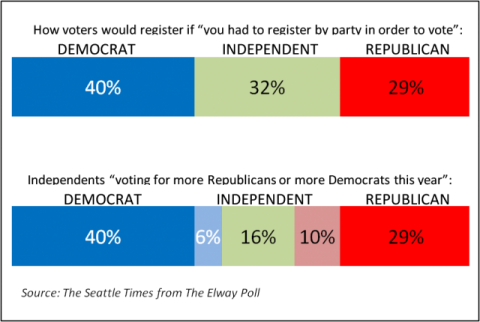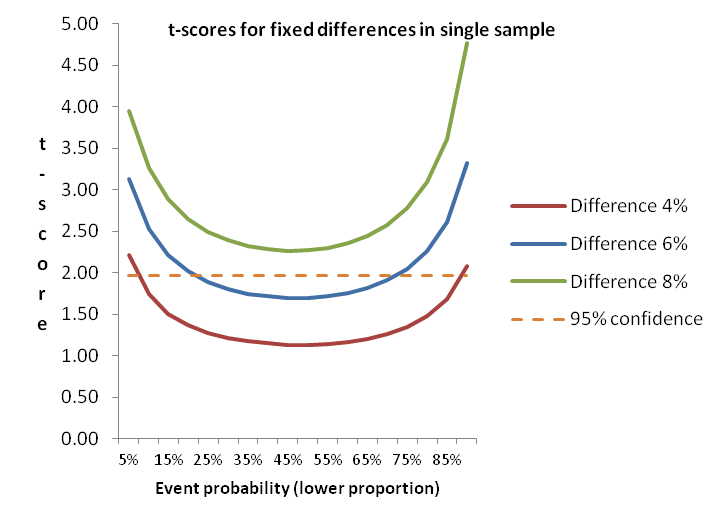Whether you are a political junkie or not, recent articles and analysis about mobile phones as part of data collection should be of interest to those who design or commission survey research. Cost, bias, and predictability are key issues.
In years gone by, cell phone users were rarely included in surveys. There was uncertainty about likely reaction of potential respondents (“why are you calling me on my mobile when I have to pay for incoming calls?”, “is this legal?”). Although even early on surveyors were nervous about introducing bias through not including younger age groups, studies showed that there were only insignificant differences beyond those associated with technology. When cell phone only households were only 7% researchers tended to ignore them. Besides, surveying via cell phone cost more, due to requirements that auto-dialing techniques couldn’t be used, increased rejection rates, compensating survey takers to compensate for their costs, and also a need for additional screening to reduce the likelihood of someone taking the survey from an unsafe place. Pew Research Center’s landmark 2006 study focused on cell phone usage and related attitudes, but also showed that the Hispanic population was more likely to be cell phone only.
Over the course of the next couple of years, Pew conducted several studies (e.g. http://people-press.org/report/391/the-impact-of-cell-onlys-on-public-opinion-polling ) showing that there was little difference in political attitudes between samples using landline only and those using cell phones. At the same time, Pew pointed out that other non-political attitudes and behaviors (such as health risk behaviors) differed between the two groups. They also noted that cell phone only households had reached 14% in December 2007. Furthermore, while acknowledging the impact of cost, Pew studies also commented on the value of including cell phone sampling in order to reach certain segments of the population (low income, younger). What’s Missing from National RDD Surveys? The Impact of the Growing Cell-Only Population.
Time marches on. Not surprisingly give the studies above, for more and more research, cell phone sample is now being included. With cell phone only households now estimated at upwards of 25% this increasingly makes sense. But not apparently for most political polls, despite criticism. The Economist, in an article October 7, 2010, http://www.economist.com/node/17202427 summarizes the issues well. Cost of course is one factor, but this impacts different polling firms and types differently. Pollsters relying on robocalling (O.K. IVR or Interactive Voice Response if you don’t want to associate these types of polls with assuredly partisan phone calls), are particularly affected by cost considerations. Jay Leve of SurveyUSA estimates costs would double for firms to change from automated calling to human interviewers as would be needed to call cell phones. And as the percentage of cell phone only households varies across states, predictability is even less likely. I suspect that much of this is factored into Nate Silver’s assessments on his FiveThirtyEight blog, but he is also critical of the pollsters for introducing bias (http://fivethirtyeight.blogs.nytimes.com/2010/10/28/robopolls-significantly-more-favorable-to-republicans-than-traditional-surveys/ ). Silver holds Rasmussen up as having a Republican bias due to their methodology, and recently contrasted Rasmussen results here in Washington State with Elway (a local pollster using human interviewers) who has a Democratic bias according to FiveThirtyEight.
I’ve only scratched the surface of the discussion. We are finally seeing some pollsters incorporating cell phones into previously completely automated polls and this trend will inevitably increase as respondents are increasingly difficult to reach via landlines. Perhaps the laws will change to allow automated connections to cell phones, but I don’t see this in the near future given the recent spate of laws to deter use while driving.
But enough of politics. I’m fed up with all the calls (mostly push, only a few surveys) because apparently my VOIP phone still counts as a landline. Still, I look forward to dissecting the impact of cell phones after the dust has settled from November 2nd.
What’s the impact for researchers beyond the political arena?
- If your survey needs a telephone data collection sample for general population, you’d better consider including cell phone users despite the increased cost. Perhaps you can use a small sample to assess bias or representativeness, but weighting alone will leave unanswered questions without some current or recent data for comparison.
- Perhaps it’s time to use online data collection for all or part of your sample. Online (whether invitations are conducted through panels, river sampling, or social media) may be a better way to reach most of the cell phone only people. Yes, it’s true that the online population doesn’t completely mirror the overall population, but differences are decreasing and it may not matter much for your specific topic. Recent studies I’ve conducted confirm that online panelists aren’t all higher income, broadband connected, younger people. To be sure, certain groups are less likely to be online, but specialist panels can help with, for example, Hispanic people.
The one thing you can’t do is to ignore the cell phone only households.
By the way, if you are in the Seattle area, you might be interested in joining me at the next Puget Sound Research Forum luncheon on November 18, when REI will present the results of research comparing results from landline, cell phone and online panel sample for projectability. http://pugetsoundresearchforum.org/
Good luck with your cell phone issues!
Idiosyncratically,
Mike Pritchard

